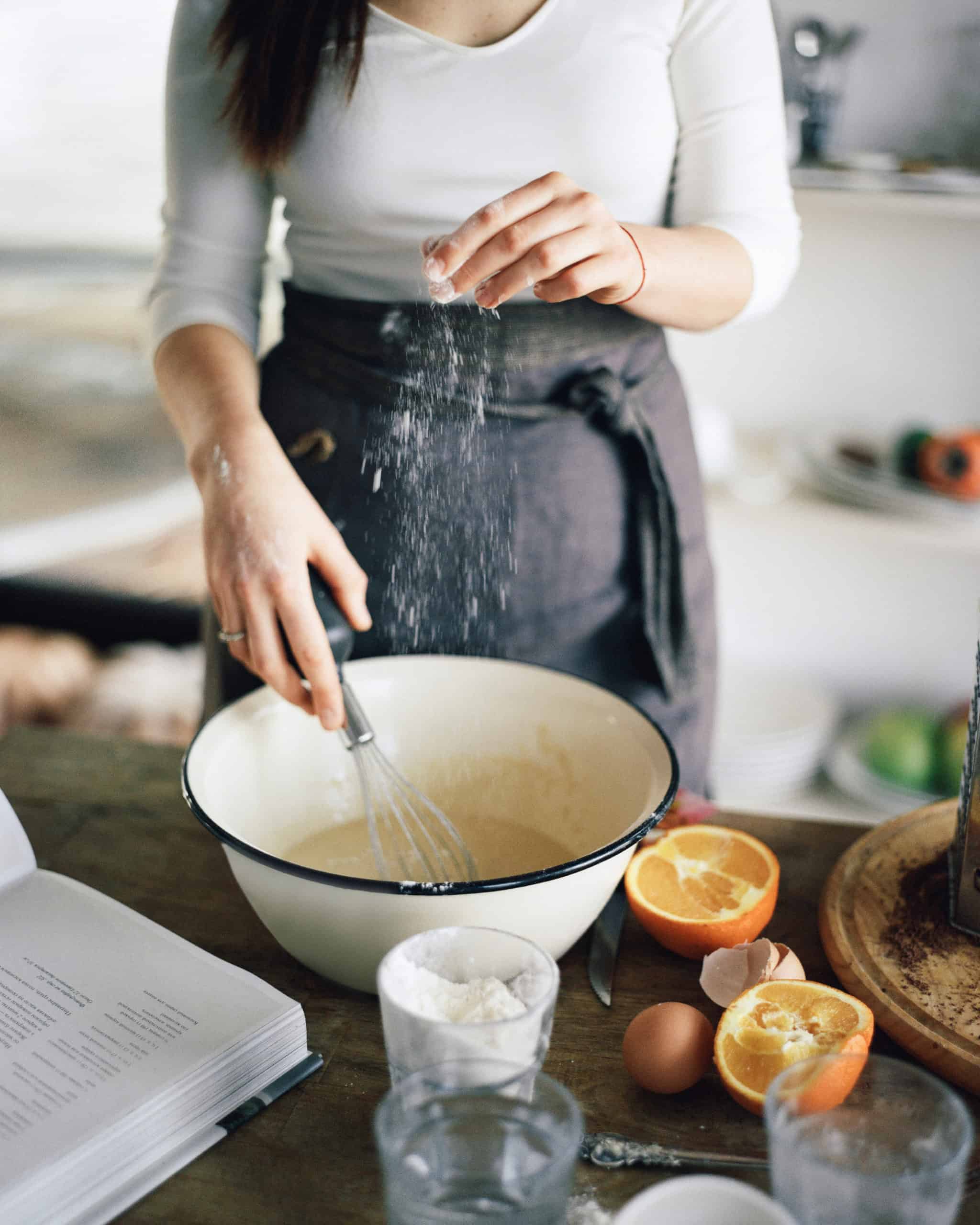How to keep holiday treats in the house and reach your health goals

By the end of December, it’s not uncommon to settle into a routine of wearing exclusively stretchy pants and eating Christmas cookies for breakfast, a piece of fudge post-lunch, and ending your dinner with a slice of pie. (I know we can’t be the only ones!) Regardless, holiday treats are more plentiful this time of year than pine needles on your carpet, so it’s no surprise we end up eating more sweets this season than any other time.
We tend to chalk it up as an end-of-year tradition, vowing to eat healthier and put down the caramel corn once January 1 rolls around. But we know that all-or-nothing thinking is a recipe for an unhealthy relationship with food and fuel for endless cycles of restricting and overeating.
Who can refuse the baked goods and treats that our neighbors, family, and friends love to send this time of year? Plus, a holiday (or life) without any sweets is neither enjoyable nor sustainable. But most of us find ourselves with a counter full of chocolate, toffee, and candy begging to be eaten, and a trove of leftover sweets we have no idea what to do with.
Now that most of us are working remotely, getting rid of excess holiday sweets by bringing them into the office for others to enjoy is no longer an option. Plus, psychology also says that’s not an effective relationship to find a healthy, sustainable relationship with food. So, what can we do with all these leftover goodies? Rather than throwing them all in the garbage and never thinking about them again (your grandma’s snickerdoodles deserve more respect than that), we’ve put together four strategies to help you enjoy your leftovers while also working toward your health goals and developing a healthier relationship with food.
1. Pre-portion your treats
If you’re newer to improving your eating habits and practicing moderation, or concerned about your portion sizes, pre-portion out your treats. Grab the Tupperware and Ziploc bags and portion out bags of 1-2 cookies, a cup of muddy buddies, small slices of cake, and a few pieces of candy. When you’re craving something sweet, you can easily grab your pre-portioned servings and know exactly what you’re consuming. Take the time to enjoy what you’re eating, feel satisfied, and move on—treats are always meant to be enjoyed without guilt.
2. Repurpose (and regift) them
If you’re getting tired of eating the same candy, chocolate-covered pretzels, fudge, and other leftover sweets on repeat, get creative and use them to bake more treats to give to others as a New Year’s gift. Scour Pinterest for ideas on how to chop candy bars to use for cookies and candy bark, make a sweet-and-savory trail mix, or fudge brownies and muffins. We love this recipe for Leftover Candy Cookie Bars and Candy Cane Fudge. Enjoy them for yourself, or wrap them up in festive tins and packaging, and send with love.
3. Freeze them
Who says you have to have Christmas cookies at Christmas? Find freezer-safe storage containers and bags and throw some treats in the deep freeze to enjoy throughout the rest of the year. Generally, cookies and chocolate candy bars last about 8-10 months in the freezer, a baked pie 6 months, brownies 3-5 months, and cupcakes about three months.
4. Lean in to the exposure
Do you ever think about certain foods as “trigger” foods and vow to never keep them in the house lest you binge them all at once? You might have heard the philosophy to never have these “trigger” foods in your environment ever, but we know that’s not a sustainable way to live.
There’s no such thing as “good” or “bad” foods. In fact, the very idea of thinking of foods as “bad” or “off-limits” is black-or-white thinking—a thought distortion that feeds a restrictive mindset and an unhealthy (and unsustainable) relationship with food. The more you restrict yourself of a certain food, the more you think about it and crave it. Before you know it, you’re completely consumed by your cravings and you’ll likely end up eating (and overeating it)—the very thing you were trying to avoid.
A better option is to keep these foods, which is a concept borrowed from exposure therapy. By having certain foods around, you learn to live with them and how to enjoy them in moderation: cutting a serving size of apple pie to enjoy after dinner every once in a while is a better way to satisfy your craving than devouring half of it straight from the pan after months of depriving yourself. Keeping treats in the house and allowing yourself to enjoy when you’re craving them will help your body and mind learn that this won’t be the last time you’ll ever have holiday treats; the cookies will be there tomorrow and the next day, so you don’t have to eat them all at once.
Bottom line: Enjoy the season
Overall, having a healthy relationship with food involves allowing yourself permission to eat all foods. Of course, having peppermint bark for every meal won’t make you feel good and isn’t a long-term healthy strategy. But the holiday season is a great time to practice enjoying all foods—especially those that are popular this time of year—and making choices that are satisfying for you.
If you’re looking to reach your health goals while creating a healthy, balanced relationship with food, we hope these strategies are helpful. (If all else fails, you can always ship us your leftovers.)

